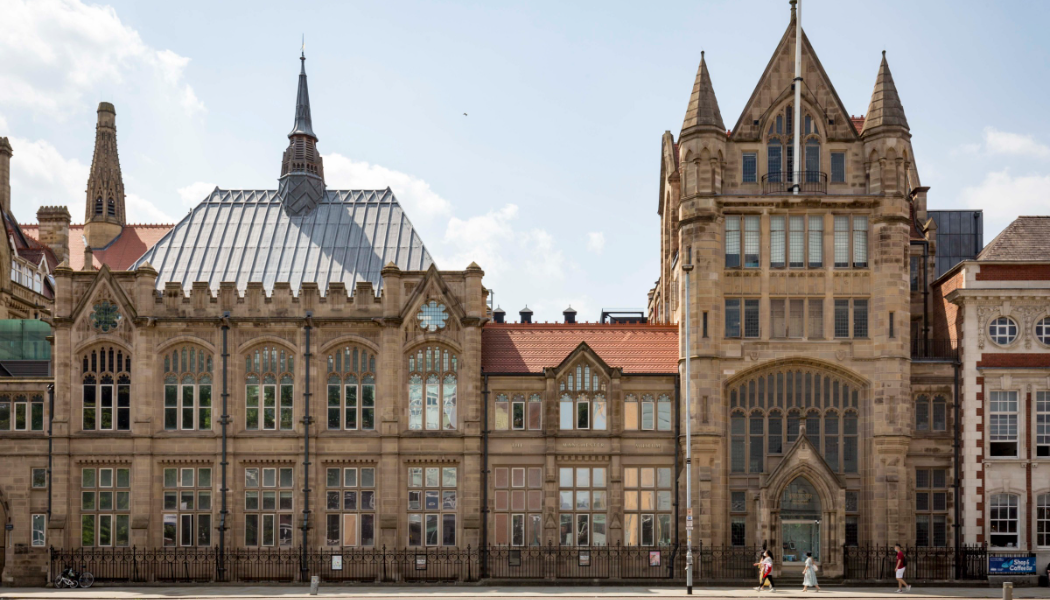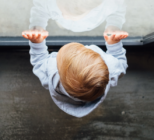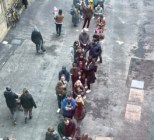Following its £15 million transformation, Manchester Museum reopens this weekend, on 18 February 2023.
The museum closed in 2021 to facilitate the final phase of its capital development project, ‘hello future’, supported by public funding from Arts Council England, The National Lottery Heritage Fund, The University of Manchester, and numerous philanthropic supporters.
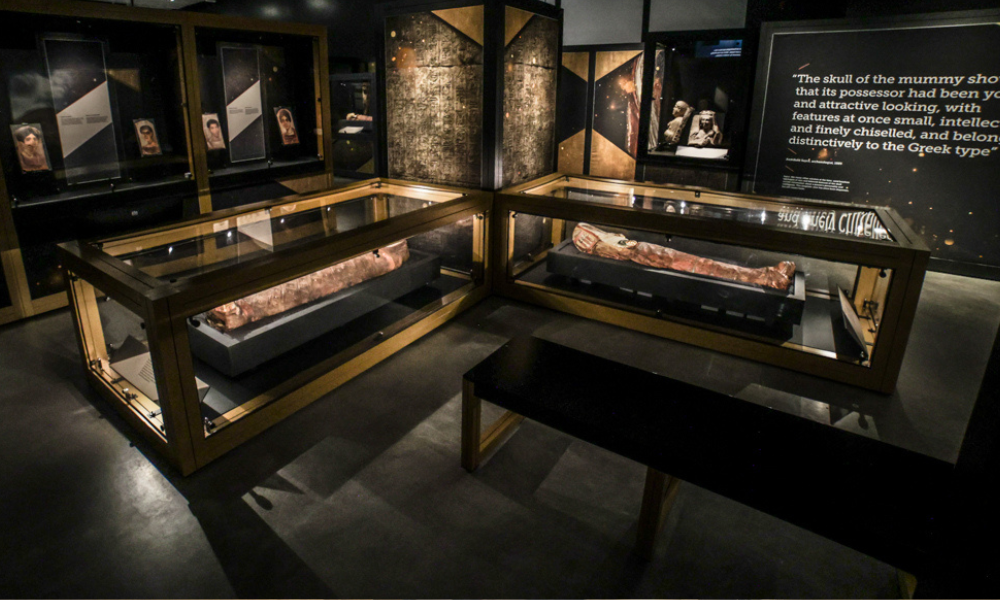
Golden Mummies of Egypt
The museum will open with the UK debut of Golden Mummies of Egypt, which debuts a collection of eight gilded mummies and over 100 objects. The exhibition, which has toured the USA and China, makes its final stop in Manchester having already attracted 450,000 visitors.
The exhibition is set in Manchester Museum’s Exhibition Hall, the museum’s newly dedicated space for shows, and will run through 2023.
New research, pioneered and undertaken by Manchester Museum’s Curator of Egypt and Sudan, Dr Campbell Price, offers a new reading of the Museum’s Egyptian collection through a contemporary lens.
Dr Price explained: “Originally these extraordinary objects were considered within the Victorian context in which they came to the Museum. Our exhibition aims to highlight how this history has informed pervading modern interpretations of life and death during an era when Egypt was part of the Greek and Roman worlds.”
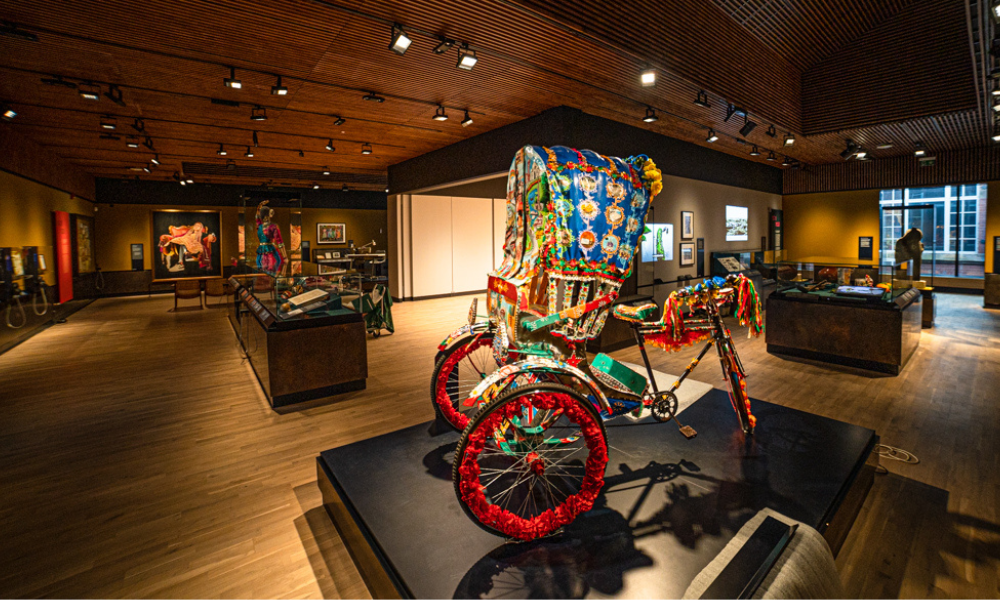
South Asia Gallery
The museum’s opening will also allow visitors their first access to its new South Asia Gallery.
In partnership with the British Museum, it is the first permanent gallery in the UK dedicated to the experiences and histories of South Asian diaspora communities.
The gallery has been co-curated by the South Asia Gallery Collective, a group of 30 inspiring individuals including community leaders, educators, artists, historians, journalists and musicians.
The museum said its new gallery “presents a range of personal stories that provide visitors with a window into South Asia.
“The gallery’s story-led design reflects multiple voices and perspectives on South Asia through six overarching themes: Past & Present, Lived Environments, Science & Innovation,, Sound, Music & Dance, British Asian, and Movement & Empire.”
Over 140 historic artefacts are on display from the collections of the Manchester Museum and British Museum, alongside new contemporary commissions and personal objects provided by the Collective.
New commissions are also on display, celebrating contemporary South Asian creativity and innovation, including a rickshaw imported from Bangladesh and decorated by communities in Manchester and a 17-metre-long newly commissioned mural from British artists, The Singh Twins, illustrating a map of South Asian diaspora experience.
A dedicated space at the centre of the gallery will be shaped by ideas and contributions from the Collective and events will be programmed in collaboration with both local and international artists and performers.
Nusrat Ahmed, South Asia Gallery Curator at Manchester Museum explained: “The co-curated South Asia Gallery envisages a collaborative, iterative space that will generate new perspectives and connections.
“We hope to engage further diaspora communities on its opening and support its continual evolution. This personalised approach humanises the gallery, telling stories about real people and their objects.”
Hartwig Fischer, Director of The British Museum said: “We have learnt, and will continue to learn, a great deal from the communities and colleagues in Manchester on this innovative project. Creating partnership gallery spaces like these is a vital part of our national programmes work to share our collections with audiences across the UK.”
Also revealed for the first time is a new Lee Kai Hung Chinese Culture Gallery, the Belonging Gallery, and a brand new Dinosaur display.
Lee Kai Hung Chinese Culture Gallery
Developed in partnership with the University’s Manchester China Institute, the Lee Kai Hung Chinese Culture Gallery draws on historical and contemporary links between Manchester and China.
Collections from cultural partners across the city are on display, and include a late Qing dynasty (1636–1912) ‘Manchu’ headdress decorated with blue kingfisher feathers, a 20-metre scroll showing Emperor Kangxi’s birthday procession through the streets of Beijing.
Belonging Gallery
The museum said the new Belonging Gallery draws upon its collections and diverse cultural perspectives to “reflect on what it means to belong”.
The gallery has been curated by Alexandra P. Alberda, the first-ever Curator of Indigenous Perspectives at Manchester Museum. Alberda was appointed to take forward the innovative ‘Indigenising Manchester Museum’ programme, funded by the John Ellerman Foundation.
Following an open call, the exhibition presents the work of multiple visual storytellers, who bring their own life experience to comic art. Works include Indigenous and African Futurism, explored alongside artefacts and natural history specimens from the Museum’s collections.
Stories include the climate migration of the first people to Britain during the last Ice Age and the story of a Syrian refugee’s life jacket, collected in 2017.
New Tenontosaurus display
One of the Museum’s most visited exhibits, the prehistoric giant ‘Stan the Tyrannosaurus rex’, returns alongside a new addition, ‘April the Tenontosaurus’, positioned next to the historic Fossils Gallery.
The Museum worked with a team of Earth Science students from the University of Manchester, whose new research and several years of cataloguing have allowed April’s skeleton, dating back to the Cretaceous period and found in Montana, USA, to stand on all fours again.
Esme Ward, Museum Director of Manchester Museum called the reopening “a huge moment in Manchester Museum’s rich history as we open our doors following a major transformation.
“We have extended the building, making room for more joy and learning and evolving into the Museum Manchester needs. Beautiful new galleries and exhibitions will showcase the best of the Museum’s historic collections, as well as addressing the urgencies of the present day and highlighting the complexities of our world.
“We have also listened to advocates with lived experience, and inclusive new spaces and features are incorporated throughout. We are delighted to welcome our visitors back.”

